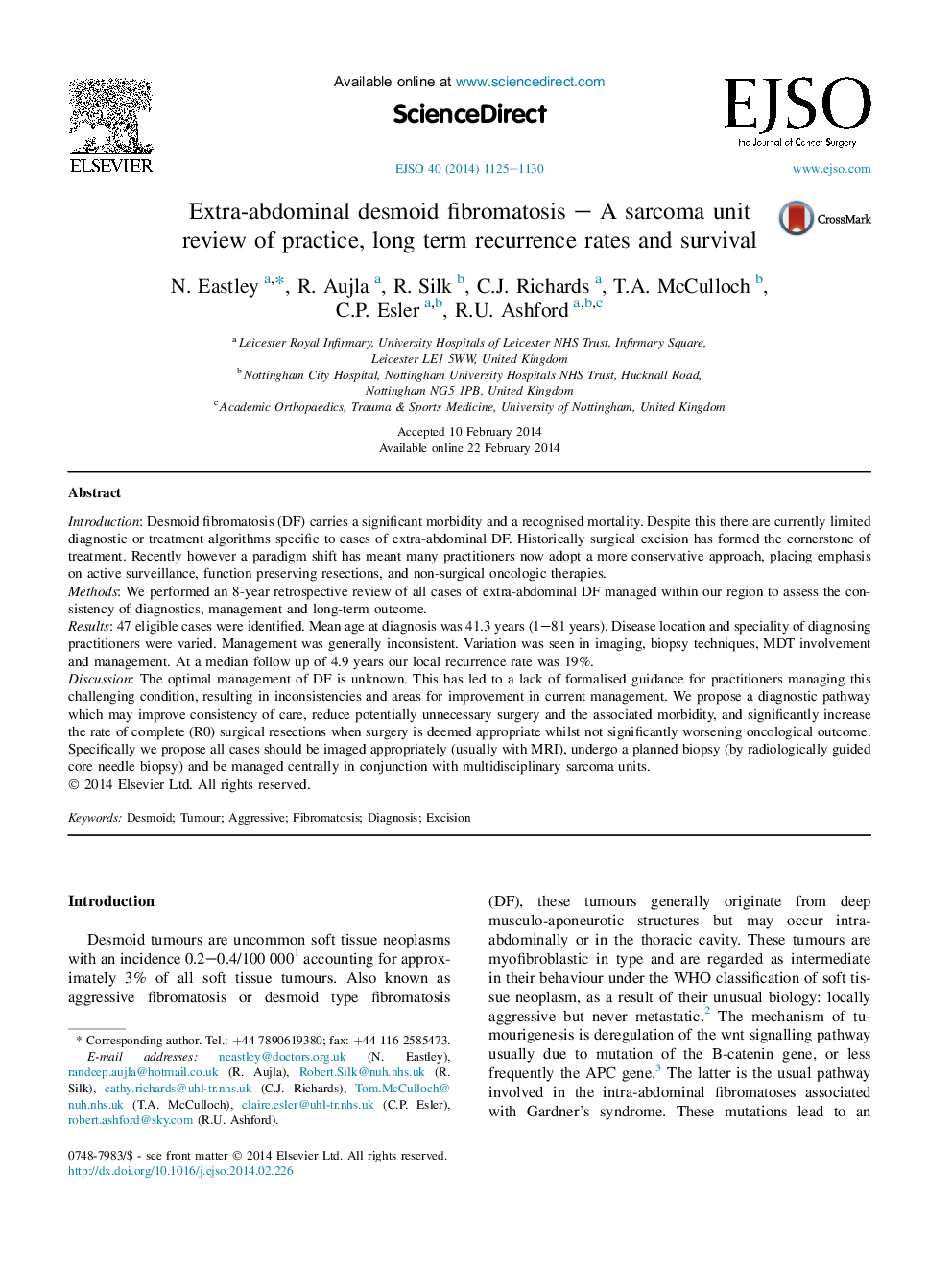| Article ID | Journal | Published Year | Pages | File Type |
|---|---|---|---|---|
| 6191872 | European Journal of Surgical Oncology (EJSO) | 2014 | 6 Pages |
IntroductionDesmoid fibromatosis (DF) carries a significant morbidity and a recognised mortality. Despite this there are currently limited diagnostic or treatment algorithms specific to cases of extra-abdominal DF. Historically surgical excision has formed the cornerstone of treatment. Recently however a paradigm shift has meant many practitioners now adopt a more conservative approach, placing emphasis on active surveillance, function preserving resections, and non-surgical oncologic therapies.MethodsWe performed an 8-year retrospective review of all cases of extra-abdominal DF managed within our region to assess the consistency of diagnostics, management and long-term outcome.Results47 eligible cases were identified. Mean age at diagnosis was 41.3 years (1-81 years). Disease location and speciality of diagnosing practitioners were varied. Management was generally inconsistent. Variation was seen in imaging, biopsy techniques, MDT involvement and management. At a median follow up of 4.9 years our local recurrence rate was 19%.DiscussionThe optimal management of DF is unknown. This has led to a lack of formalised guidance for practitioners managing this challenging condition, resulting in inconsistencies and areas for improvement in current management. We propose a diagnostic pathway which may improve consistency of care, reduce potentially unnecessary surgery and the associated morbidity, and significantly increase the rate of complete (R0) surgical resections when surgery is deemed appropriate whilst not significantly worsening oncological outcome. Specifically we propose all cases should be imaged appropriately (usually with MRI), undergo a planned biopsy (by radiologically guided core needle biopsy) and be managed centrally in conjunction with multidisciplinary sarcoma units.
